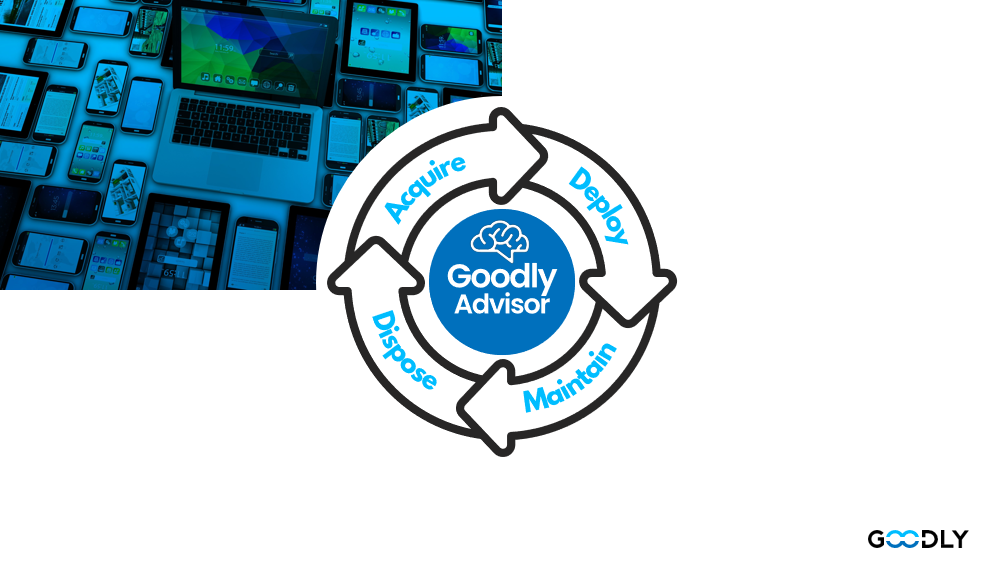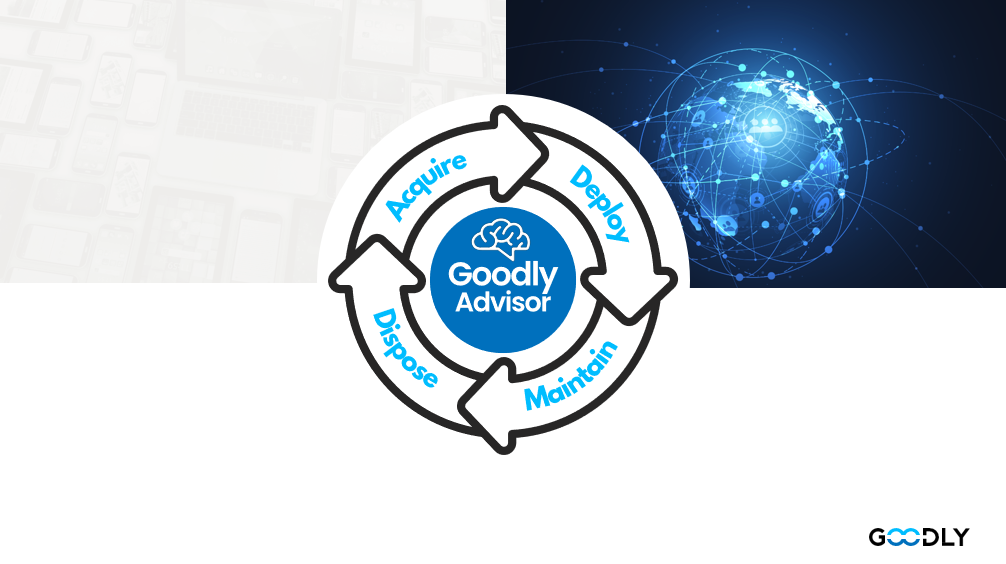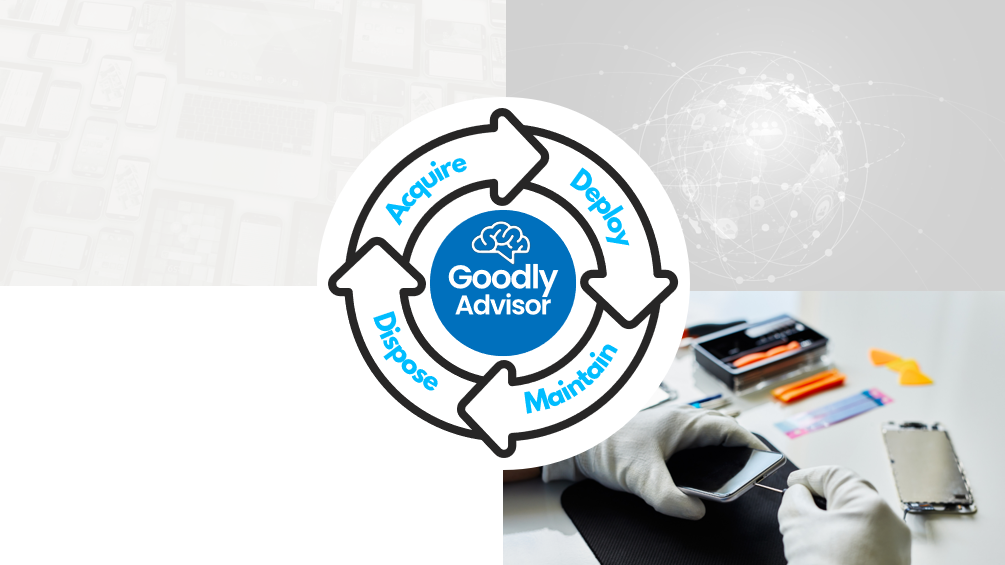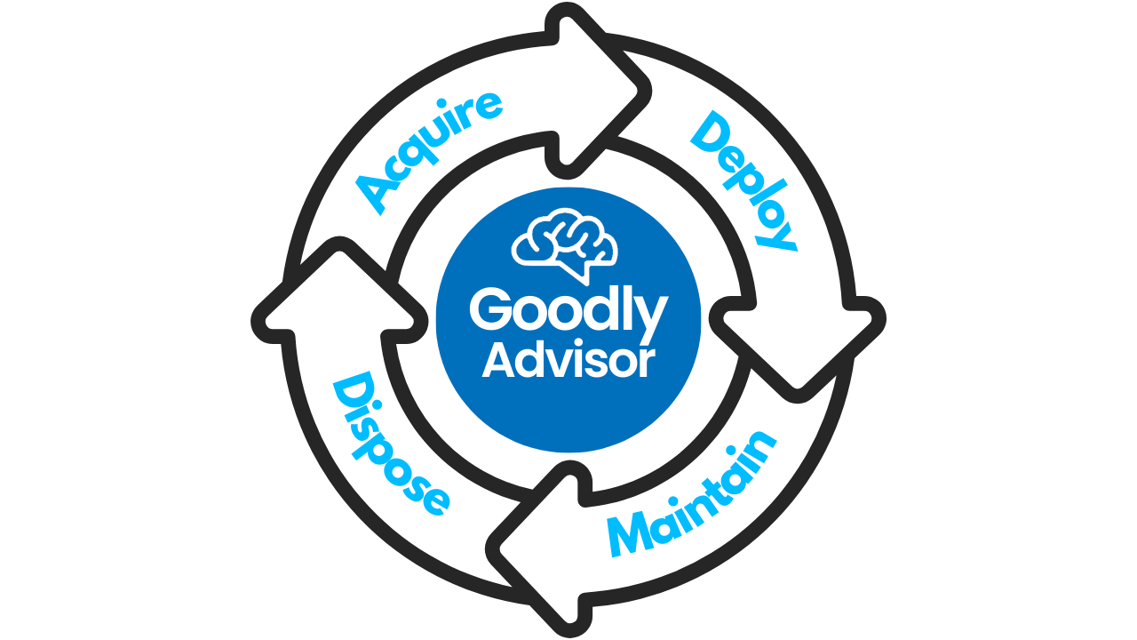Are you looking for a tool that will help you manage your IT assets throughout their entire lifecycle? From acquisition to retirement, device lifecycle management is an important part of any organization's success. In this overview, we will explore the four stages of device lifecycle management: acquisition, deployment, maintenance, and retirement. With the right strategies, you can guarantee that your devices are either up and running or replaced ASAP.
Acquire
Acquistion is the phase during which a device acquisition is planned and executed. This includes doing research on potential hardware, submitting an order to purchase, lease or somehow obtain devices.

The acquisition phase of device lifecycle management is the first and most important step in the process. During this phase, businesses must plan and execute their device acquisitions, from researching potential hardware to submitting orders for purchase or lease. This initial step sets the foundation for successful device management throughout its lifespan.
Goodly Pro Tip: make you consider all aspects of the device before making a choice.
- How will this device be used?
- What is the OS?
- How long does the manufacturer typically support its device models for?
- How well does this device age?
- Do you have long-term warranty options?
- What is the expected resell value?
- When do you expect to replace it?
When it comes to acquiring devices, organizations must consider a variety of factors such as budget constraints, performance requirements, and future scalability needs. Researching multiple makes and models should be done to make sure that the right balance between cost and features is achieved. Additionally, companies should consider any compatibility issues that may arise when integrating new hardware with existing systems. Once research has been conducted and an appropriate device is chosen, a purchase or lease order can be submitted to obtain the necessary equipment.
Goodly Pro Tip: "Device as a Service (DaaS)" is now officially a thing. As organizations focus on adapting as quickly as possible to customer expectation and competitive threats, a lot of focus is put on software and integrated systems. Often, "Device as a Service" is a interesting way for organizations to reduce the resources they have to allocated to asset management. DaaS offerings are sometimes difficult to compare with simpler "buy" or "lease" offer, but they should not be ignored.
Organizations should consider using automated tools and processes to streamline the acquisition process wherever possible. Automation can help guarantee accuracy by removing manual errors while also reducing time spent on mundane tasks such as ordering supplies and tracking shipments. By leveraging these solutions, companies can save precious resources while still maintaining control over their device acquisitions from start to finish.
In conclusion, successful device lifecycle management begins with properly planning and executing an effective acquisition strategy during the first phase of the process. Organizations need to consider all aspects of acquiring devices including budget constraints, performance requirements and existing eco-system constraints before submitting orders. Automated tools can also be used to streamline this process when possible to save time and money while still providing quality results.
Deployment
At this stage, assets are configured, prepared, and then distributed to users. This includes the software configurations, physical kitting, and logistics aspects of device deployment.

Deployment is an integral part of device lifecycle management, and involves a variety of tasks that must be completed before devices are distributed to users. This includes the software configuration, physical kitting, and logistics aspects of device deployment.
Software configurations involve setting up each device with the necessary applications and settings for it to work as intended. This may include anything from installing specialized programs or configuring security settings on the device. It also includes connecting the device to a network or domain so that it can access necessary resources such as email and databases. Doing this properly makes sure that devices are ready to use when they are deployed in the field. In most cases, organizations rely on one or more "Mobile Device Management (MDM)" systems to take care of the software configuration.
Physical kitting is another important part of deployment. This involves making sure that all the necessary accessories, peripherals and components are included with each device when it is shipped out. For example, if a laptop computer is being shipped out, its power cord, and any other essential hardware accessoies should be included with it so that users have everything they need to start using their device right away. In the case of mobile phones, this may include chargers, cases, or even SIM cards.
The logistics aspect of deployment covers all of the administrative tasks involved in getting devices from point A to point B safely and efficiently. This includes packing the devices securely for shipping, tracking them during transit, and following up with end users upon delivery of the assets.
Goodly Pro Tip: Organizations often underestimate the back and forth with end-users that is required to get everyone up and running. Automating communications with end-users for things like notifications of device shipment, reminders to perform tasks such as returning older devices that are being replaced, or simply providing instructions in digital format can significantly reduce the workload of support agents.
Finally, once all these tasks have been completed successfully, devices can be sent out into the field for use by their intended users. Taking care of each step in the process helps ensure that deployments run smoothly and keep downtime at a minimum - which ultimately leads to improved user experience and satisfaction with your product or service overall.
Maintain
The device maintenance phase takes up the majority of a device's lifecycle. When the device is in operation, it's important to keep the device operational, which means it has to get maintained. Good maintenance means making sure devices are covered by a warranty and making sure that you have robust processes in place in the event that a device stops working. Theses processes include the management of spares to replace broken devices as well as the coordination of device repairs with manufacturers or certified repair providers.

Device maintenance is a critical part of the device lifecycle, as it not only ensures that devices operate at peak performance but also helps extend the lifetime of each device. Proper maintenance requires proper planning, and a good plan should include proactive measures to protect the device from potential failure or damage during normal usage - as simple example of pro-active maintenance is replacing batteries when they reach a certain percentage of battery health.
Another important factor in device maintenance is having robust processes in place to handle any problems that may arise during its use. This includes having spares on hand to replace broken devices, as well as establishing partnerships with manufacturers or certified repair providers to make sure any repairs are handled quickly and professionally. Making sure your devices have valid warranties is also essential for minimizing repair costs in the event something does go wrong with a unit.
Finally, it’s important to ensure that users receive ongoing support throughout the life of their device, especially when dealing with technology unfamiliar to them. Providing access to user guides and other resources can help users better understand how their devices operate and avoid "user-errors". Additionally, offering live technical assistance or self-service options like chatbots can help streamline many of these processes and eliminate frustration for users who may otherwise feel lost with their new equipment.
By taking steps such as these into consideration when developing a maintenance plan, you can help ensure your devices remain operational while providing an enhanced user experience throughout its lifecycle – ultimately leading to improved customer satisfaction overall.
Retire
Retirement is the final stage in the life of a device. At the end of its useful life for an organization, a device can be retired in many different ways: certified destruction, re-assignment, selling the asset, trading it in with a manufacturer, donating it or recycling it.

Retirement is the final stage in the life of a device. At the end of its useful life for an organization, there are several options to consider when retiring a device. Certified destruction is one option, which involves securely destroying all data stored on the device and physically destroying it so no parts can be reused. Re-assignment is also an option, where a device that has reached its end-of-life with one organization may still have value to another organization. providing an efficient way to extend its lifespan and reduce waste. Selling or trading in assets with manufacturers can help organizations recoup some of their initial investment in the device, while donating or recycling devices can help ensure they don’t end up in landfills.
When planning for retirement, organizations should take into consideration any applicable laws or regulations regarding asset disposal and data security, as well as any potential environmental impacts from disposing of devices. Additionally, any data stored on devices must be securely wiped before being retired; this includes anything stored locally on the hard drive as well as removable media such as USB sticks, SD cards or external hard drives. Having a robust policy in place to manage this process helps ensure that all necessary steps are taken before retiring any device.
Finally, organizations should have measures in place to track each device throughout its lifecycle so they know when it’s time to retire each asset and what action needs to be taken upon retirement. Having accurate records on the location and status of each asset helps ensure that nothing slips through the cracks and no valuable resources are left unused or unaccounted for at the end of their useful life.
In summary, proper management of each stage of a device’s lifecycle is essential for maximizing efficiency and minimizing cost over time; however, retirement is particularly important as it helps keep resources out of landfills and protect data from falling into unauthorized hands. Organizations should plan accordingly by understanding applicable laws and regulations pertaining to asset disposal; ensuring secure wiping of all data prior to retirement, and tracking assets throughout their lifecycle so they know when they need to take action upon reaching the end-of-life phase.

